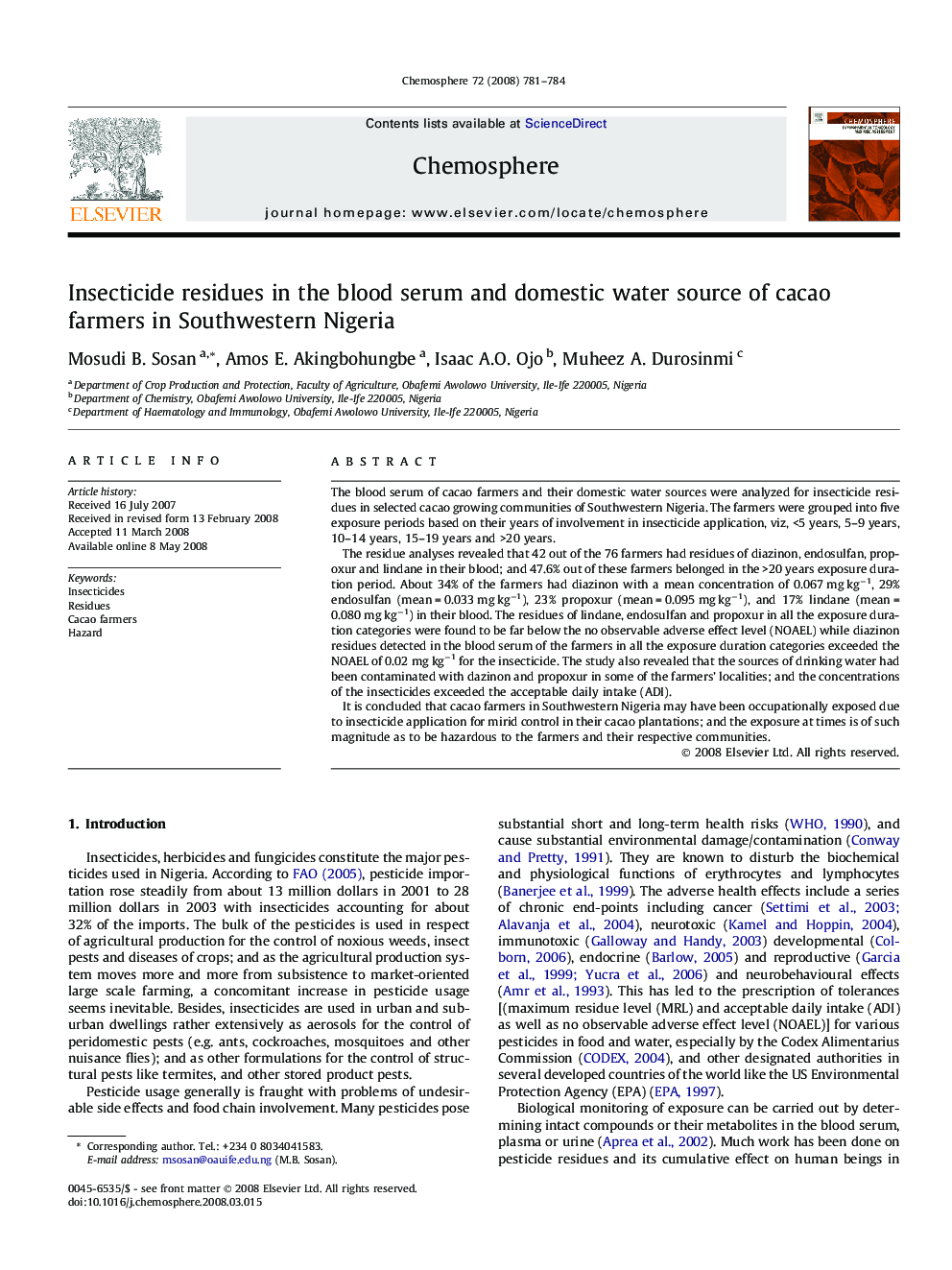| Article ID | Journal | Published Year | Pages | File Type |
|---|---|---|---|---|
| 4414126 | Chemosphere | 2008 | 4 Pages |
The blood serum of cacao farmers and their domestic water sources were analyzed for insecticide residues in selected cacao growing communities of Southwestern Nigeria. The farmers were grouped into five exposure periods based on their years of involvement in insecticide application, viz, <5 years, 5–9 years, 10–14 years, 15–19 years and >20 years.The residue analyses revealed that 42 out of the 76 farmers had residues of diazinon, endosulfan, propoxur and lindane in their blood; and 47.6% out of these farmers belonged in the >20 years exposure duration period. About 34% of the farmers had diazinon with a mean concentration of 0.067 mg kg−1, 29% endosulfan (mean = 0.033 mg kg−1), 23% propoxur (mean = 0.095 mg kg−1), and 17% lindane (mean = 0.080 mg kg−1) in their blood. The residues of lindane, endosulfan and propoxur in all the exposure duration categories were found to be far below the no observable adverse effect level (NOAEL) while diazinon residues detected in the blood serum of the farmers in all the exposure duration categories exceeded the NOAEL of 0.02 mg kg−1 for the insecticide. The study also revealed that the sources of drinking water had been contaminated with dazinon and propoxur in some of the farmers’ localities; and the concentrations of the insecticides exceeded the acceptable daily intake (ADI).It is concluded that cacao farmers in Southwestern Nigeria may have been occupationally exposed due to insecticide application for mirid control in their cacao plantations; and the exposure at times is of such magnitude as to be hazardous to the farmers and their respective communities.
